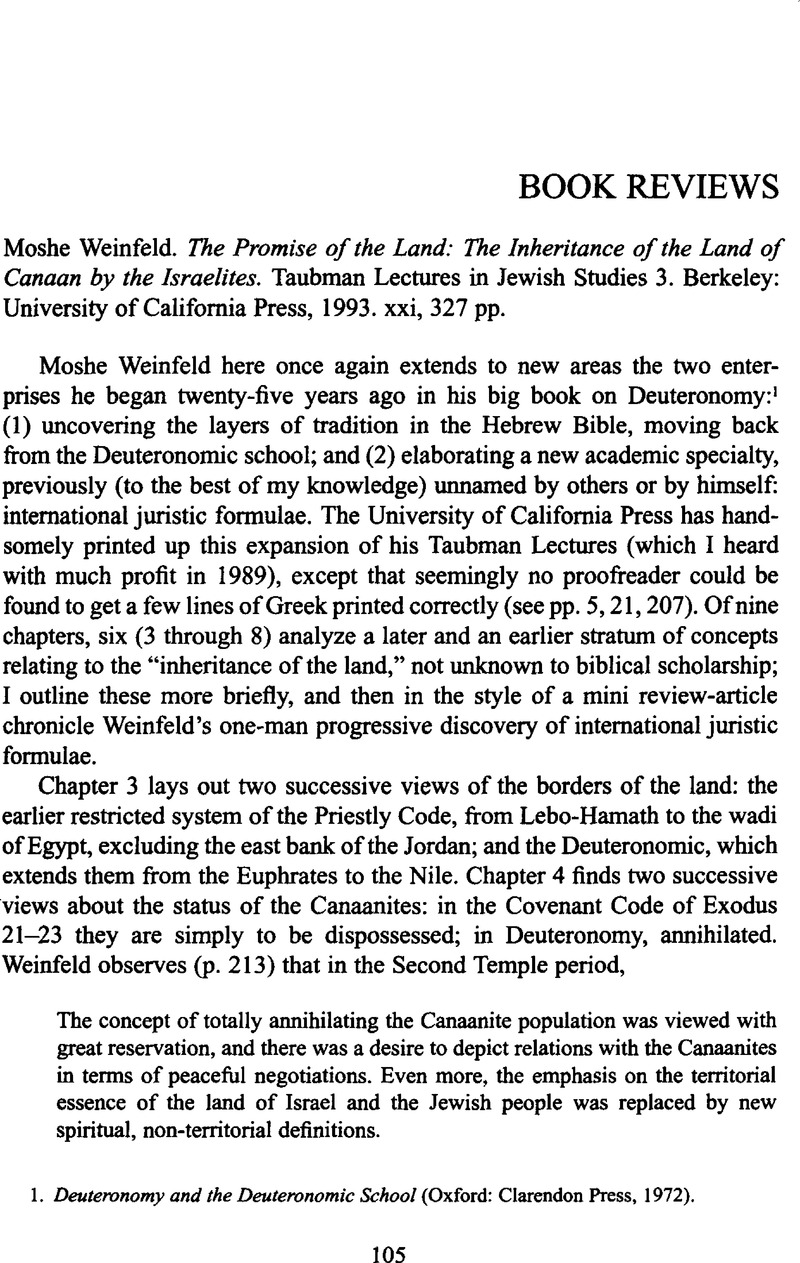No CrossRef data available.
Published online by Cambridge University Press: 15 October 2009

1. Deuteronomy and the Deuteronomic School (Oxford: Clarendon Press, 1972).
2. “Covenant Terminology in the Ancient Near East and Its Influence on the West,” Journal of the American Oriental Society 93 (1973): 190–199.
3. “The Loyalty Oath in the Ancient Near East,” Ugarit-Forschungen 8 (1976): 379–414, in spite of its title, containing abundant Greco-Roman parallels.
4. “Instructions for Temple Visitors in the Bible and in Ancient Egypt,” in Egyptological Studies, ed. Sarah, Israelit-Groll, Scripta Hierosolymitana 28 (Jerusalem: Magnes Press, 1982) pp. 224–250.Google Scholar
5. The Organizational Pattern and the Penal Code of the Qumran Sect: A Comparison with Guilds and Religious Associations of the Hellenistic-Roman Period, Novum Testamentum et Orbis Antiquus 2 (Gottingen: Vandenhoek & Ruprecht, 1986).
6. “The Census in Mari, in Ancient Israel and in Ancient Rome,” in Storia e tradizioni di Israele, ed. D. Garrone (Brescia: Paideia, 1992), pp: 293–298
7. Social Justice in Ancient Israel and in the Ancient Near East (Minneapolis: Fortress Press, 1995).
8. Weinfeld's Greek example (p. 9) can be somewhat improved: see the parallel of dike and themis “justice and law” at Odyssey 9.215, Pindar Isthmian 9 fragment
9. With “confirm a treaty” (![]() e.g. Genesis 6:18) Weinfeld compares Latin foedus firmare (p. 235), which I can document at Vergil Aeneid 12.212 firmabant foedera.
e.g. Genesis 6:18) Weinfeld compares Latin foedus firmare (p. 235), which I can document at Vergil Aeneid 12.212 firmabant foedera.
10. Gordon, Cyrus H., “Vergil and the Bible World,” in Gratz College Anniversary Volume, ed. I.D., Passow and S. T. Lachs (Philadelphia: Gratz College, 1971), pp. 111–130; revising his study “Vergil and the Near East,” Ugaritica 6 (1969): 267–288.Google Scholar
11. See Westbrook, Raymond, “The Nature and Origin of the Twelve Tables,” Zeitschrift der Savigny-StiftungjurRechtsgeschichte, Romanistische Abteilung 105 (1988): 74–121. Westbrook compares, on the one hand, the casuistic method of the Roman Twelve Tables, the Akkadian codes, and the Covenant (Exodus 21–22) and Deuteronomic (Deuteronomy 21–25) Codes; on the other hand, the “scientific” method shared by Gaius and the Mishna.Google Scholar